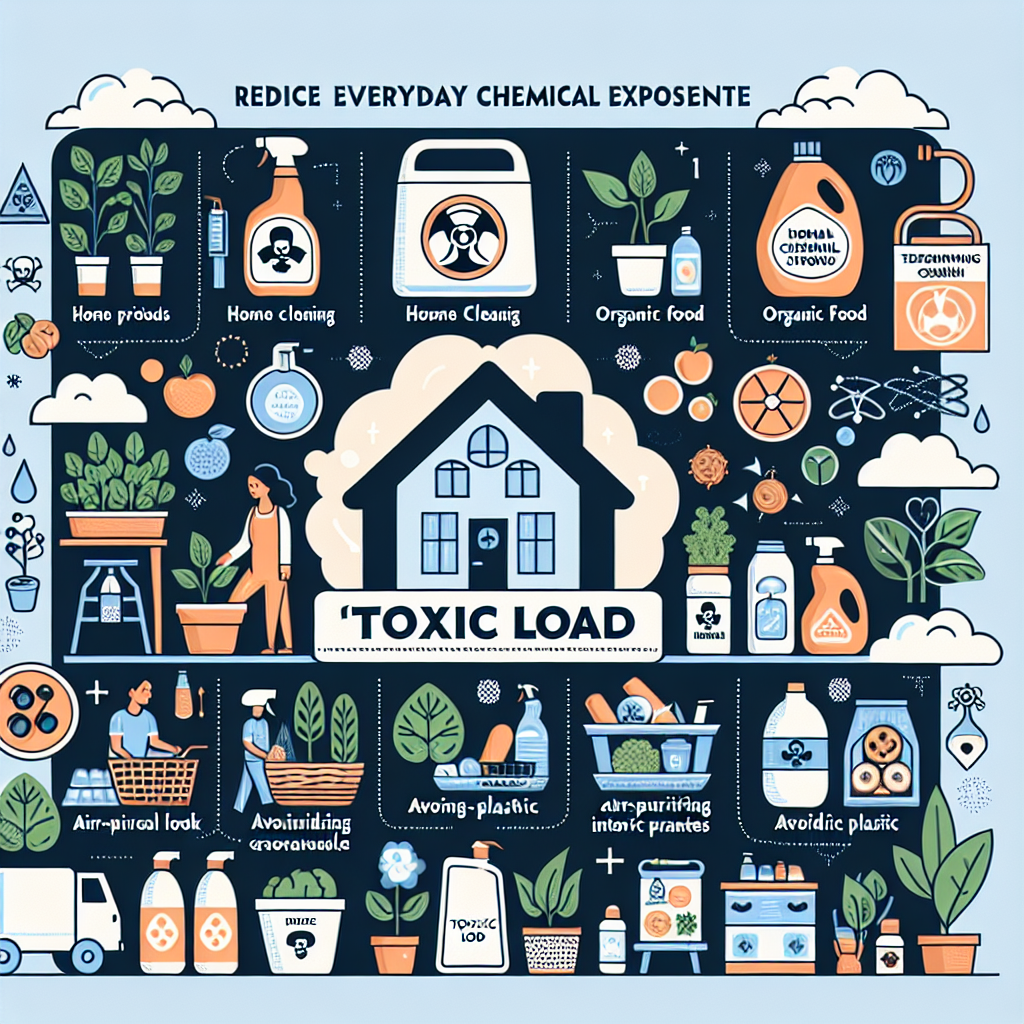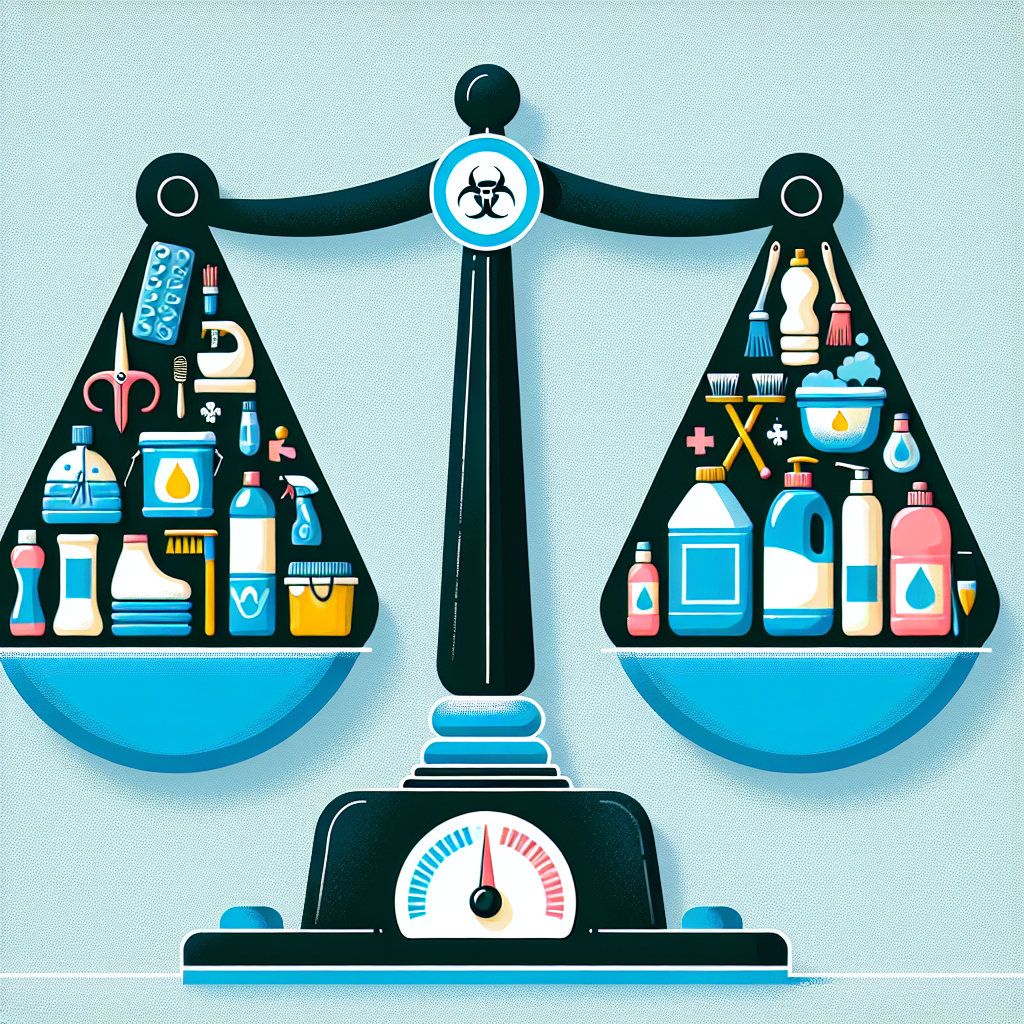Toxic Load: How to Reduce Everyday Chemical Exposure

Discover how to reduce your everyday chemical exposure and lower your toxic load. Take control of your health today by visiting www.myvibrantvitality.com.
Understanding and Minimizing Toxic Load: A Comprehensive Guide
Toxic load refers to the accumulation of chemicals and toxins in our bodies that we are exposed to through various sources such as food, water, air, and even everyday household items. The concept of toxic load is becoming increasingly important as we continue to learn more about the potential health risks associated with long-term exposure to certain chemicals. This article aims to provide a comprehensive guide to understanding and minimizing toxic load.
The first step in understanding toxic load is recognizing the sources of chemical exposure. These can be broadly categorized into two groups: external and internal sources. External sources include environmental pollutants, such as air and water pollution, pesticides in food, and chemicals in household and personal care products. Internal sources, on the other hand, are toxins produced within the body as a result of metabolic processes, such as the breakdown of food and drugs.
The human body has a remarkable ability to detoxify and eliminate these toxins through various mechanisms. However, when the exposure to toxins exceeds the body’s capacity to detoxify, they accumulate in the body, leading to a high toxic load. This can potentially disrupt normal bodily functions and contribute to various health problems, including chronic diseases like cancer, heart disease, and neurological disorders.
Reducing toxic load involves minimizing exposure to toxins and enhancing the body’s detoxification capabilities. Here are some strategies to achieve this:
Firstly, be mindful of what you eat. Opt for organic foods whenever possible to avoid pesticides and other harmful chemicals. Also, limit your intake of processed foods, which often contain artificial additives and preservatives. Instead, focus on a diet rich in fruits, vegetables, whole grains, and lean proteins, which not only provide essential nutrients but also support the body’s detoxification processes.
Secondly, pay attention to the quality of your drinking water. Tap water can contain various contaminants, including heavy metals, chlorine, and pharmaceutical residues. Consider investing in a high-quality water filter to ensure you’re not adding to your toxic load every time you hydrate.
Thirdly, be aware of the products you use in your home and on your body. Many household cleaning products, cosmetics, and personal care items contain chemicals that can be absorbed through the skin or inhaled. Look for products with natural ingredients or consider making your own.
Lastly, support your body’s detoxification processes. Regular exercise, adequate hydration, and sufficient sleep can all enhance your body’s ability to detoxify. Certain foods, such as cruciferous vegetables, garlic, and green tea, are also known to support detoxification.
In conclusion, while it’s impossible to completely avoid exposure to all toxins, understanding the concept of toxic load and taking steps to minimize it can significantly reduce the potential health risks associated with chemical exposure. Remember, every small change can make a big difference in reducing your toxic load and promoting overall health.
Practical Steps to Reduce Everyday Chemical Exposure

Toxic load refers to the accumulation of chemicals and toxins in our bodies that we are exposed to through various sources like food, air, and everyday products. It’s a growing concern in today’s world, where we are surrounded by synthetic materials and processed foods. While it’s nearly impossible to eliminate all exposure, there are practical steps we can take to reduce our everyday chemical exposure and, consequently, our toxic load.
Firstly, one of the most significant sources of chemical exposure is the food we consume. Processed foods often contain a host of additives, preservatives, and other chemicals. Therefore, a shift towards a diet rich in organic, whole foods can significantly reduce our chemical intake. Organic foods are grown without synthetic pesticides and fertilizers, making them a healthier choice. Additionally, cooking at home allows for control over the ingredients used, further reducing exposure to unwanted chemicals.
Secondly, the water we drink can also be a source of chemical exposure. Tap water, while generally safe, can contain trace amounts of chemicals. Investing in a good quality water filter can help remove these potential toxins and provide cleaner, safer water for daily consumption.
Thirdly, the products we use on our bodies, such as cosmetics and personal care products, often contain a cocktail of chemicals. Many of these substances can be absorbed through the skin, contributing to our toxic load. Opting for natural or organic personal care products can significantly reduce this exposure. Look for products with fewer ingredients and avoid those with parabens, phthalates, and synthetic fragrances.
Fourthly, our homes can also be a source of chemical exposure. Many cleaning products, air fresheners, and even furniture can release harmful chemicals into the air. Opt for natural cleaning products or make your own using ingredients like vinegar and baking soda. Additionally, consider adding indoor plants to your home. They not only beautify the space but also help purify the air.
Lastly, the clothes we wear can also contribute to our chemical exposure. Many fabrics are treated with synthetic chemicals to make them wrinkle-free, stain-resistant, or flame-retardant. Whenever possible, choose clothing made from natural fibers like cotton, wool, or linen. Also, washing new clothes before wearing them can help remove some of these chemicals.
In conclusion, while it’s impossible to completely avoid chemical exposure in today’s world, we can take steps to significantly reduce it. By making conscious choices about the food we eat, the water we drink, the products we use on our bodies, the environment we live in, and the clothes we wear, we can reduce our toxic load and promote better health. Remember, every small change can make a big difference. So, start today and make the shift towards a less toxic lifestyle.
The Role of Diet and Lifestyle in Lowering Toxic Load
Toxic load refers to the accumulation of chemicals and toxins in our bodies that we are exposed to through various sources such as food, water, air, and even everyday household items. The increasing prevalence of these toxins in our environment is a growing concern, as they can have detrimental effects on our health, contributing to a range of conditions from hormonal imbalances to chronic diseases. However, by making conscious choices about our diet and lifestyle, we can significantly reduce our toxic load and safeguard our health.
Diet plays a pivotal role in managing our toxic load. The food we consume can either add to our body’s chemical burden or help to alleviate it. Processed foods, for instance, often contain a host of additives, preservatives, and other synthetic ingredients that can increase our toxic load. On the other hand, a diet rich in whole, organic foods can help to lower our exposure to these harmful substances. Organic foods are grown without the use of synthetic pesticides and fertilizers, which are common sources of toxins. Moreover, they are often richer in nutrients that support our body’s natural detoxification processes.
In addition to choosing organic, incorporating a variety of fruits and vegetables into our diet can further aid in reducing our toxic load. These foods are high in antioxidants and other phytochemicals that help to neutralize harmful toxins in the body. Cruciferous vegetables such as broccoli, kale, and Brussels sprouts are particularly beneficial, as they contain compounds that enhance the liver’s ability to detoxify chemicals.
Hydration is another crucial aspect of a toxin-reducing diet. Water aids in flushing out toxins from our body through sweat and urine. Therefore, ensuring adequate hydration can help to lower our toxic load. Opting for filtered water over tap water can further reduce our exposure to chemicals, as tap water can contain contaminants such as chlorine and heavy metals.
While diet is a key component in managing our toxic load, lifestyle factors also play a significant role. Regular exercise, for instance, can help to reduce our toxic load by promoting the elimination of toxins through sweat. Moreover, physical activity boosts circulation, aiding in the delivery of nutrients to our cells and the removal of waste products.
Reducing our use of chemical-laden household products is another effective way to lower our toxic load. Many cleaning products, personal care items, and even furniture and clothing can contain harmful chemicals. By choosing natural, non-toxic alternatives, we can significantly reduce our daily chemical exposure.
Stress management is also essential in lowering our toxic load. Chronic stress can impair our body’s detoxification processes, making it harder for us to eliminate toxins. Techniques such as meditation, yoga, and deep breathing can help to manage stress levels, supporting our body’s ability to detoxify.
In conclusion, while we may not have control over all sources of chemical exposure in our environment, we can make conscious choices about our diet and lifestyle to reduce our toxic load. By choosing organic, nutrient-dense foods, staying hydrated, exercising regularly, opting for non-toxic household products, and managing stress, we can significantly lower our exposure to harmful chemicals and support our body’s natural detoxification processes.